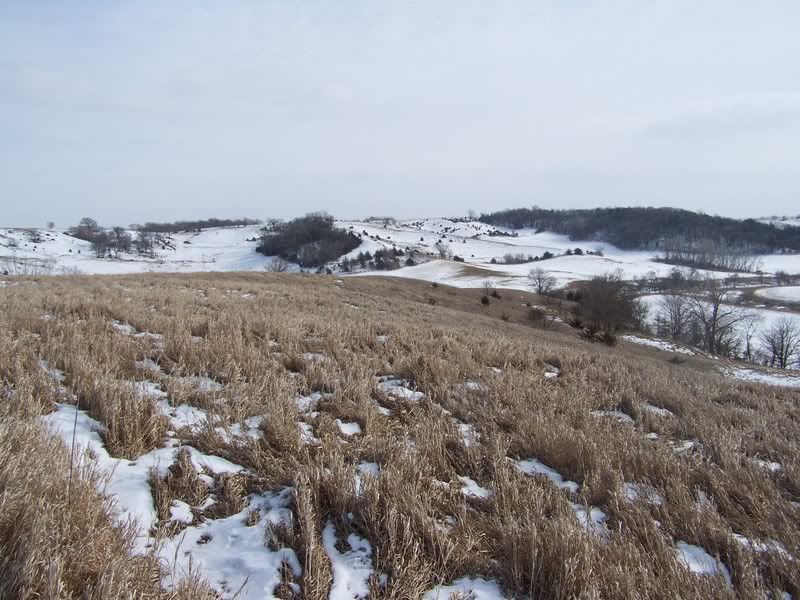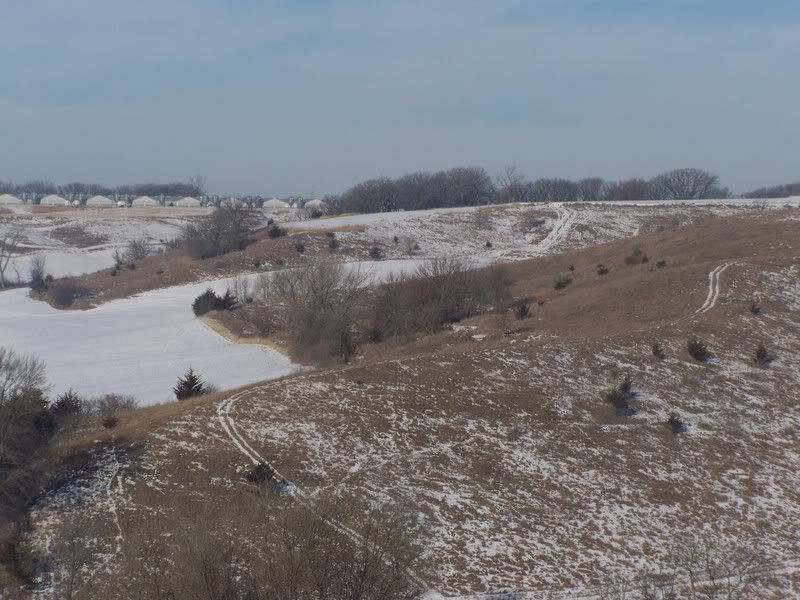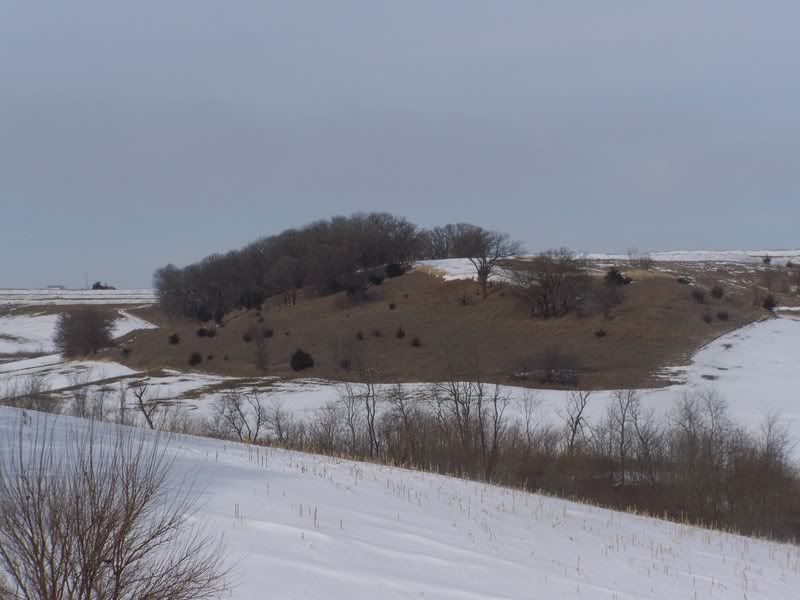dbltree
Super Moderator
Re: Native Warm Season Grass - Little Bluestem
The ranger said they burn at least every other year. I think that is the ticket to NWSG for sure. I've never seen NWSG fail from "too much" burning. I would think in your case, late burning would help set back cool seasons and keep the WSG coming on strong.
I'm not really sure when the proper time to collect seed is...I suppose right about in the middle of hunting season
I've got some nice Little bluestem just starting to go to seed...how the heck does one collect that fuzzy stuff??

I really like Little Bluestem for pheasant nesting cover, note the red/blue hues that LB that change the plants apppearance especially after frosts.

How long would it take to collect enough seed to plant an acre??

Here's a link to more good pics of Little Bluestem and the fluffy little "spikelets": Little Bluestem
Here are some more pics of Little Bluestem (Schizachyrium scoparium) and supporting information:
Little Bluestem is often confused with Broomsedge Bluestem (Andropogon virginicus):
Look for the difference between the two in this way:
LB Awns
Broomsedge awns

Broomsedge is rare in Iowa: broomsedge bluestem in Iowa
This link contains more great pics of both of these plants as well as other NWSG's
NWSG Identification and description

Good soil fertlity can make broomsedge "go away"...
This is perhaps a better picture of broomsedge bluestem in the field:

and a seed pic

Little Bluestem
Little Bluestem is a clump grass

Which really shows up after burning


The ranger said they burn at least every other year. I think that is the ticket to NWSG for sure. I've never seen NWSG fail from "too much" burning. I would think in your case, late burning would help set back cool seasons and keep the WSG coming on strong.
I'm not really sure when the proper time to collect seed is...I suppose right about in the middle of hunting season
I've got some nice Little bluestem just starting to go to seed...how the heck does one collect that fuzzy stuff??

I really like Little Bluestem for pheasant nesting cover, note the red/blue hues that LB that change the plants apppearance especially after frosts.

How long would it take to collect enough seed to plant an acre??

Here's a link to more good pics of Little Bluestem and the fluffy little "spikelets": Little Bluestem
Here are some more pics of Little Bluestem (Schizachyrium scoparium) and supporting information:
The dominant forage of the True Prairie and considered one of the "big four" grasses. The leaves often have a blue-green appearance and the stems are flattened, especially near the base of the plant.
It has a single inflorescence which emerges from a slightly inflated leaf. It provides screening and nesting cover for some wildlife species and good forage for cattle.
Little Bluestem is often confused with Broomsedge Bluestem (Andropogon virginicus):
Typically occurs on infertile, moist soils and is a common grass of go-back lands. Similar to Little bluestem but with a split inflorescence and a more straw-colored appearance when dormant.
It provides screening and nesting cover for some wildlife species. It is a poor to fair forage for cattle.
Look for the difference between the two in this way:
It is easily mistaken for common broomsedge (Andropogon virginicus) except little bluestem has very flat bluish basal shoots.
Broomsedge has a straight awn and has two or more stalked seed clusters per branch. Little bluestem has a twisted, bent awn and a single cluster of seeds per branch.
LB Awns
Broomsedge awns

Broomsedge is rare in Iowa: broomsedge bluestem in Iowa
Although broomsedge is a close relative of big bluestem (Andropogon gerardii), it is not a Midwestern prairie grass and is not common in Iowa. In fact, its occurrence in Iowa is documented by one specimen from Wapello county, collected in 1941 by Dr. Ada Hayden, the former curator of ISU’s herbarium and the first woman to earn a doctorate from Iowa State.
Dr. Tom Rosberg (Drake University) also reports occurrences of this species in Appanoose and Ringgold Counties. Broomsedge is a common weedy plant in the eastern and southern U.S., where it occurs in abandoned fields, hillsides and thin woods. It is frequently found in disturbed areas, and is considered an indicator of poor soil.
This link contains more great pics of both of these plants as well as other NWSG's
NWSG Identification and description

Good soil fertlity can make broomsedge "go away"...
This native warm-season grass is often confused with little bluestem.
Compared with little bluestem, broomsedge stems are the more flattened and more densely leafed.
Also, broomsedge in the fall/winter is typically yellowish tan, while little bluestem has a bronzy color. It is usually no more than 2 feet tall at maturity. Seeds are light and fluffy. Dense stands are often indicative of acid soils, phosphorus deficiency or overgrazing.
Lime and fertilizer application may cause broomsedge to decline or disappear.
This is perhaps a better picture of broomsedge bluestem in the field:

and a seed pic

Little Bluestem
Little bluestem is found throughout the Midwest on moderately dry (mesic) to dry soils.
This native grass occurs in clumps with fine leaves less than 1/4 inch wide. Seed stalks are commonly 2 to 3 feet tall, but may reach 4 feet on better soils.
Stems are hairy and flattened near the base. Seeds are light and fluffy, giving the plant a feathery appearance.
Little bluestem has a striking appearance after frost, when it attains a coppery hue.
This grass is commonly confused with broomsedge.
Little Bluestem is a clump grass

Which really shows up after burning

Little bluestem seeds are light and fluffy, covered in fine hairs

Last edited:


























































